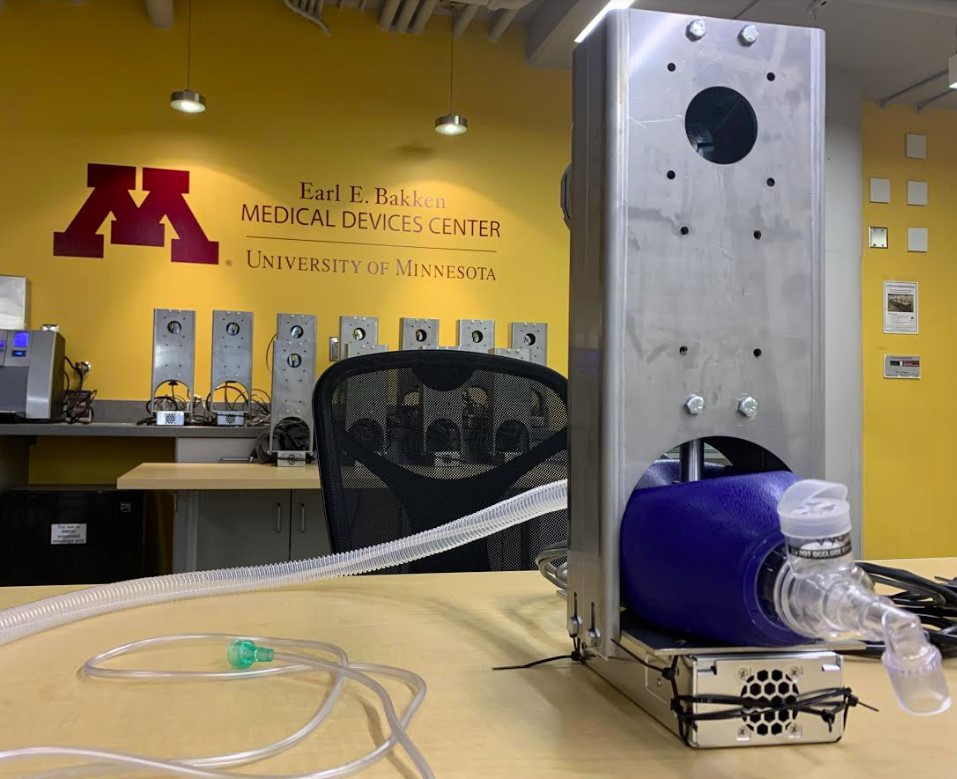The University of Minnesota released the design requirements needed to produce the COVID-19 ventilator, or Coventor, to outside non-medical manufacturers.
The ventilator was developed by researchers at the University to assist healthcare professionals in treating COVID-19 patients. Under the open source license agreement, anyone can now begin producing the ventilator without paying for the design requirements.
“This particular case with COVID-19, it was all about just getting [the designs] out there,” said Rick Huebsch, executive director for Technology Commercialization at the University. “Basically we said, ‘We will do what we can to get these technologies out there, and we’re not going to let licensing get in the way of saving people’s lives.’”
Releasing the design requirements for free is not common practice, Huebsch said. The cost of prototypes or intellectual property developed by the University typically varies greatly.
“In a standard case, [the cost] varies way all over the map. We’ve got a couple things on our website that you can download for either a hundred dollars or $1,000, and then we’ve got technologies that we’ve licensed for a million dollars,” Huebsch said.

The process of designing a new piece of technology, receiving FDA approval and releasing a license to outside manufacturers is typically a yearslong and costly process, Huebsch said. This process was sped up due to the need for ventilators during the COVID-19 pandemic.
“Everybody just said we’re going to cooperate, so the whole culture of cooperation was the underpinnings for all of this,” Huebsch said. “Secondly, making the decision to basically give it away and have a quicker impact was a decision that people came to very early on.”
More than 60 outside manufacturers have signed the open source license, though many will not end up producing the ventilator long-term, said University spokesperson Kevin Coss.
Appareo, an electronics manufacturer based in North Dakota, has downloaded the designs and plans to begin producing the ventilator.
“Most of our designs are in-house designs … and that’s more typical in how we develop and create designs. So the open license design was very new. That was not something we had done before,” said Eva Blanchard, a senior engineer at Appareo.
The ventilators Appaero produces will be delivered to hospitals and other areas around North and South Dakota. Appareo plans to continue producing the ventilators until there is no longer a need, Blanchard said.
“We basically put all of our other projects on hold to be able to respond to the COVID-19 pandemic crisis. And we shifted probably half of our workforce over to start working on getting this product up and running and ready to produce,” Blanchard said.
Many international manufacturers have also downloaded the ventilator designs in addition to companies around the country.
“In foreign entities which don’t have any kind of a tier one medical healthcare system, they’ve actually looked at this as a gap filler because they might only have one or two ventilators in a hospital,” Huebsch said. “There’s been a handful of [manufacturers] that are representing South Africa and other areas of the world.”








